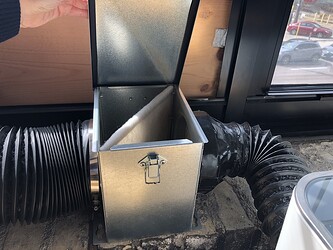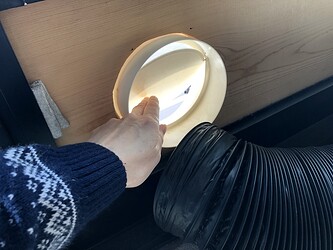The best place to learn about using the GF is from others users via the forum. Some videos posted by other owners are helpful–but don’t forget about the front end–learning to design something! If you’re not already familiar with something similar, Inkscape is a great tool for designing vectors (for cutting) and it’s free. Loads of ways to get images to engrave. It’s good to learn how to draw shapes yourself and save them into your own directories on your computer to load into the GF (some folks like the GF Library method, but mine has always had weird glitches, as well as I work on so many different things I find it easier to track myself in my own system).
And modifying patterns you can get for free, or buy, is a great way to see how something can be made, and then make the design suit your own needs…
The proofgrade prefinished maple ply is great, but I also really like fine 3mm MDF from WoodItis on Etsy. I also have had decent results etching/cutting without masking–just a damp cloth or eraser block cleaner gets the soot off (you even with masking, you’ll still have soot on the edges and etched areas you’ll want to clean off–and how much varies by material & type. (e.g. no soot with acrylic, but some with maple ply, more with MDF, and a lot it you use 50pt or higher card stock). It’s good to have the low or medium tack masking film, but not always necessary. And I don’t like using the draft board–too messy–gunks up the fan and machine very fast. But some love it–and often a way to test fit a design before using your good wood (cardboard cut from shipping boxes is great for that, too).
For ventilation, I still have my unit’s ducting against the screen of a 30" wide window, and use 1 1/2" thick foam insulation board to fill the space around the duct, and some pipe insulation to help fill gaps & seal between the foam and window. There are lots of really nice “blast gate” designs in the forum–I’ve just never gotten around to it–but I’d rather cut into my wall and put in another "dryer vent"set up for the GF. (Pending your climate, you may need a way to close your window due to extreme cold or heat/humidity for room comfort and protect your GF).
And I’m only 5’4", and found it really annoying having to stand on tiptoe and reach over the GF to get to the on/off button when it was at normal counter height. For a while I had it set up on a lower shelf unit, but now it’s at counter height again–and best thing was getting a remote control switch for the power, so I can turn the power on or off while at my computer–of course going to the unit to arrange materials and push the button–any little bit of exercise is a good thing, so I don’t mind having to walk over a few feet to do so…
And ventilation itself–there’s a lot out there about using an in-line duct fan to and turning off the internal fan for the unit–since that fan can be quite noisy. I’ve not installed one yet, but likely to do so in the near future–a lot of info about that on threads in the forum, and even videos on youTube… There are some great noise cancelling headphones that aren’t very expensive (e.g. ISOTunes) I use when it really bothers me…
Good luck, and enjoy!
Alas, can’t add anything about basic vs. plus–I bought basic, though when I pre-ordered, was the only option besides pass-thru…




